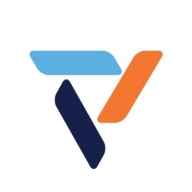

Cortex XDR by Palo Alto Networks and VIPRE Endpoint Security compete in endpoint protection. Cortex XDR appears to have the upper hand in advanced threat detection and integration, while VIPRE Endpoint Security is favored for its simplicity and cost-effectiveness.
Features: Cortex XDR provides advanced threat detection, seamless integration with other Palo Alto products, and robust response capabilities. VIPRE Endpoint Security offers ease of use, comprehensive endpoint protection, and a user-friendly interface.
Room for Improvement: Cortex XDR could improve its analytics capabilities, streamline configuration, and simplify setup. VIPRE Endpoint Security could enhance its reporting features, offer more advanced customizable options, and further expand its capabilities.
Ease of Deployment and Customer Service: Cortex XDR has a complex deployment process but provides strong customer support. VIPRE Endpoint Security ensures a straightforward deployment experience with reliable customer service.
Pricing and ROI: Cortex XDR is considered costly but delivers significant ROI for advanced security needs. VIPRE Endpoint Security is viewed as cost-effective with a respectable ROI.
| Product | Market Share (%) |
|---|---|
| Cortex XDR by Palo Alto Networks | 3.7% |
| VIPRE Endpoint Security | 0.3% |
| Other | 96.0% |

| Company Size | Count |
|---|---|
| Small Business | 41 |
| Midsize Enterprise | 18 |
| Large Enterprise | 36 |
Cortex XDR by Palo Alto Networks delivers comprehensive endpoint security, integrating well with other systems to offer robust threat detection and real-time protection through AI-driven analytics.
Cortex XDR by Palo Alto Networks offers advanced endpoint protection and threat detection through AI and behavior-based analytics. Its user-friendly design simplifies integration with firewalls, delivering multi-layered protection with low resource consumption. Valued for policy management, USB control, and incident correlation, Cortex XDR enhances threat management and real-time threat hunting capabilities. However, users note challenges with third-party integration, reporting, and dashboard automation. Agent performance across operating systems and memory consumption are areas for improvement, alongside reducing false positives and simplifying endpoint management and setup.
What features does Cortex XDR offer?
What benefits should be considered in reviews?
Cortex XDR is crucial in industries requiring robust endpoint protection, such as finance, healthcare, and technology. It supports malware detection, behavioral analysis, and ransomware mitigation across endpoints, including remote work environments, providing comprehensive threat visibility and security policy management. The solution's integration with firewalls and specialized industry requirements enhances security posture in diverse operational settings.
VIPRE Endpoint Security provides fast, powerful and easy-to-manage endpoint protection for businesses of all sizes, with a small footprint that won't slow you down.
We monitor all Endpoint Protection Platform (EPP) reviews to prevent fraudulent reviews and keep review quality high. We do not post reviews by company employees or direct competitors. We validate each review for authenticity via cross-reference with LinkedIn, and personal follow-up with the reviewer when necessary.